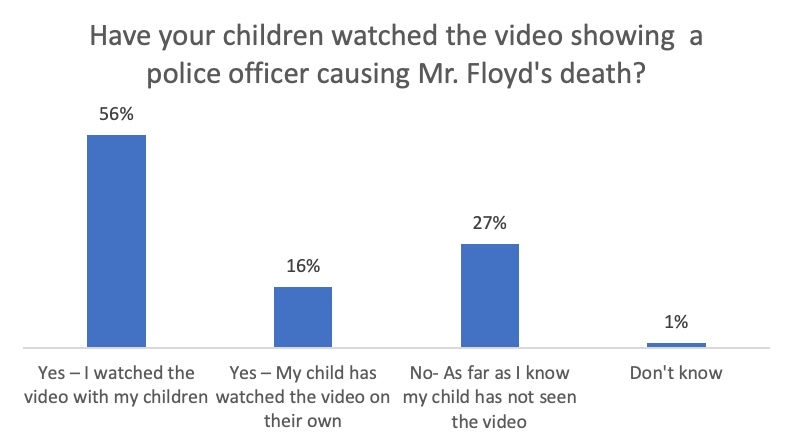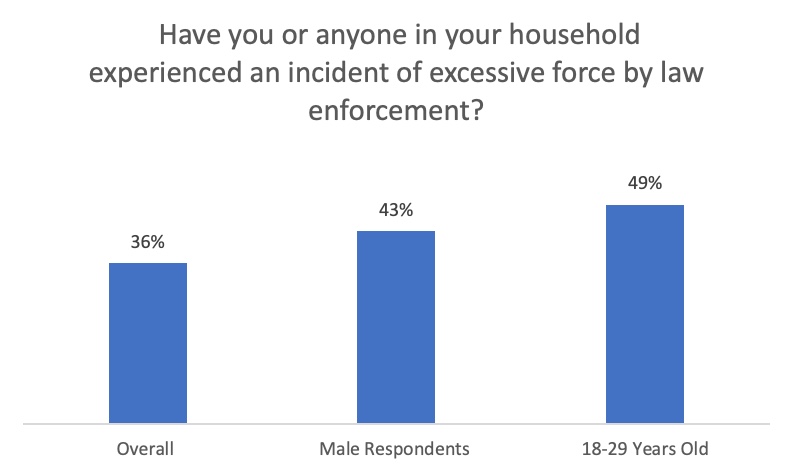

A “Justice for Andrés Guardado” sign on Sunday June 22 (Photo by Melinna Bobadilla/Latino Rebels)
The national movement against racial discrimination, structural racism, and police violence has led to large protests across the country. In addition to George Floyd, and Breanna Taylor, Andrés Guardado was shot five times in the back by law enforcement in California. In Tucson, Arizona, Carlos Ingram López died in police custody. There were also two Latino men killed in the Bay Area by law enforcement just days apart in June. These questionable deaths of Latino males during the past few months symbolize the unfortunate shared experiences Latino and African American communities have with the criminal justice system.
Although data on police involved shootings is somewhat challenging to track by race and ethnicity over time and across all states, it is clear that African Americans are the racial and ethnic group most likely to experience police involved shooting, with Latinos also being more likely than White Americans to have this experience. Between 2012-2018, the mortality risk due to police involved shootings for Black men was between 1.9 and 2.4 deaths per 100,000. For Latinos, the risk was between .9 and 1.2, when compared to the risk between .6 and .7 for the white population. Latino and African American groups having significantly higher chances of being killed by a police officer than white people in the United States.
As schools prepare for the fall, we draw from the Abriendo Puertas/Latino Decisions National Parent Survey to provide some perspective on how Latino families feel about police brutality and the extent to which they have engaged their children in discussions of racism and inequality. As our survey data reveals, most children will come back to school having viewed the video of George Floyd being killed by police officers. Schools across the country should consider integrating some discussion of racial justice and allow children who need to speak about their feelings on this important issue do so in a constructive and age-appropriate way.
The national survey of 1,195 Latino parents and grandparents was available in English or Spanish and carries an overall +/- 2.8% margin of error, with larger margins for sub-samples. The large sample size of this national survey allows for comparisons to be made in attitudes and experiences across a number of sources of variation within the Latino community, including nativity, language use, and region.
The protests across the country accelerated after video footage of George Floyd being killed by police officers in Minnesota went viral, with national news outlets across the country sharing the video with their audiences. The survey identifies that 72% of Latino children across the country have seen the footage of the police officer placing his knee on Mr. Floyd’s neck causing his death. This includes 56% of respondents who reported watching together as a family. (See figure below.)


A robust 89% of those who watched the video together reported that they have used the video of Mr. Floyd’s killing as an opportunity to speak to their children about racial bias and racial inequality. Schools should be aware that the majority of their Latino students will likely come to school with questions about what they have seen and discussed with their families.
The survey reveals that the Latino community shares some of the same experiences with police brutality as the African American community which motivates a high level of fear about their children’s interactions with law enforcement. For example, the data suggests that the Hispanic community is very concerned with policy brutality, largely due to their personal experience with excessive force. A robust 81% of respondents report (including 91% of Spanish-speaking Latinos) that they are concerned their children may experience excessive force by law enforcement at some point in their lives. This near consensus among Latino parents and grandparents that their children may face police brutality speaks to the importance of police reform to the Latino community.
For many Latino families the fight against police brutality is a personal one, as 36% (roughly one third) of Latino households reported in the survey that they have experienced an incident of excessive force by law enforcement. For Latino respondents between 18-29 years old, nearly half (49%) reported they had experienced excessive force by law enforcement, and Latino males were more likely (43% to 29%) to report experience with excessive force by law enforcement in their household than Latina respondents. (See figure below.) This is consistent with the literature focused on incarceration rates and police violence which shows young Latino males are more likely than other sub-groups to have negative interactions with police.


The survey also indicates that this shared experience with the African American community has led to an underlying sense of solidarity based on police brutality and structural racism. Nearly all (88%) respondents agree with the statement that they “understand the pain and frustration that the Black community feels right now with law enforcement because Latinos face similar experiences with law enforcement.” There was no difference in this sentiment between Latinos who live in rural or urban areas of the country, revealing that police brutality is an issue Latinos are concerned with regardless of where they live in their state.
The survey data from Latino parents and grandparents is useful for policymakers and school districts interested in addressing structural racism in our school systems. Some districts have taken steps to remove police presence from school buildings, and some states are creating statewide committees to address structural racism and racial justice. Ensuring the core curriculum used across districts is representative of the histories and lived experiences of all students, and providing students with access to racial and ethnic studies courses are also positive steps schools can take to address the concerns of Latino families.
***
Gabriel R. Sanchez is Professor of Political Science at the University of New Mexico and Principal at Latino Decisions
Edward D. Vargas (@edwarddvargas) is an Assistant Professor in the School of Transborder Studies at Arizona State University
Adrián A. Pedroza is the National Director of Strategic Partnerships for Abriendo Puertas/ Opening Doors (ap-od.org)



[…] Latino Decisions: Latino Families Have Personal Connections to the Pain of the Black Community Due to Similar Experien… […]
[…] Selections information has helped present perspective on the many challenges Latinos face with the criminal justice system which have made this a precedence for voters in an election season the place this was a part of the […]